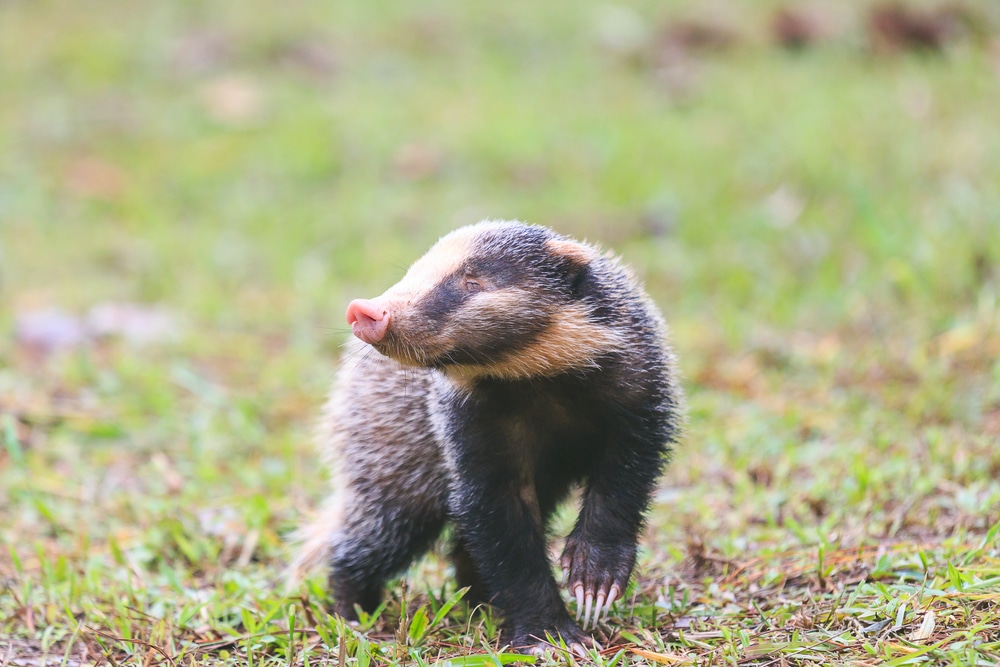
The Snout That Knows: Unearthing the Wonders of Hog Badgers
When the word “badger” comes to mind, most people picture the familiar black and white striped face of the European badger. But in the diverse landscapes of Southeast Asia and parts of India, there’s a fascinating group of badgers that sport a truly distinctive feature: a pig-like snout. Meet the Hog Badgers!
Hog badgers belong to the genus Arctonyx, and for a long time, they were considered a single species (Arctonyx collaris). However, recent genetic research has revealed that there are actually three recognized species:
- Northern Hog Badger (Arctonyx albogularis)
- Greater Hog Badger (Arctonyx collaris)
- Lesser Hog Badger (Arctonyx hoevenii)
While they share many similarities, these distinctions highlight the incredible biodiversity hidden within this often-overlooked group.
A Snout Like No Other: The Key to Their Success
The most striking feature of a hog badger is undoubtedly its elongated, mobile snout, which is hairless and pinkish, much like a pig’s. This isn’t just a quirky aesthetic; it’s a highly specialized tool, perfectly adapted for their unique foraging style.
These powerful snouts, combined with their strong necks and robust claws, make them exceptional diggers. They use them to:
- Root around in the soil: Like miniature wild boars, they methodically churn up the earth to uncover hidden treasures.
- Sniff out prey: Their keen sense of smell guides them to their next meal, even if it’s buried deep underground.
- Excavate burrows: While they may use natural crevices, they are fully capable of digging their own extensive tunnel systems.
What’s on the Menu? An Omnivore’s Feast
Hog badgers are true omnivores, and their diet reflects their incredible adaptability. Their pig-like snout isn’t just for show; it’s a vital tool for finding a diverse range of food:
- Invertebrates: This is a big one! They love to root out earthworms, insects (especially beetles and their larvae), and even scorpions and centipedes.
- Plant Matter: Roots, tubers, fruits, and fungi are all on the menu, varying with the season and local availability.
- Small Vertebrates: They’ll opportunistically prey on rodents, frogs, lizards, and even bird eggs found in nests.
Their foraging activities play an important ecological role, aerating the soil and dispersing seeds, contributing to the health of their forest and grassland habitats.
Where Do They Live? From Forests to Farmlands
Hog badgers are found across a wide range of habitats throughout Southeast Asia, including parts of India, Nepal, Bhutan, Bangladesh, Myanmar, Thailand, Vietnam, Laos, Cambodia, Malaysia, and Sumatra. They inhabit:
- Tropical and Subtropical Forests: Dense woodlands provide cover and ample food.
- Grasslands and Shrublands: Open areas where they can root for insects and tubers.
- Agricultural Land: They can sometimes be found foraging at the edges of farms, which can unfortunately lead to conflicts with humans.
They are primarily nocturnal, spending their days resting in burrows, rock crevices, or dense vegetation.
Conservation Status and Challenges
The conservation status varies among the three species of hog badgers. While the Greater Hog Badger (Arctonyx collaris) is currently listed as “Vulnerable” by the IUCN, the Northern and Lesser Hog Badgers are still being assessed more thoroughly since their recent reclassification.
Major threats to hog badgers include:
- Habitat Loss and Fragmentation: Deforestation for agriculture, logging, and infrastructure development severely impacts their homes.
- Hunting and Poaching: They are hunted for their meat, and sometimes for traditional medicine or the illegal pet trade.
- Road Mortality: As human infrastructure expands, badgers are increasingly at risk of being hit by vehicles.
- Human-Wildlife Conflict: Their foraging habits can sometimes lead them to raid crops, creating tension with local communities.
Appreciating the Snout That Knows
Hog badgers are a unique and vital part of Asia’s rich biodiversity. Their specialized snouts, versatile diets, and elusive nature make them truly fascinating creatures. By understanding the challenges they face, we can better appreciate their ecological role and work towards their conservation, ensuring that these incredible “snout that knows” continues to thrive in the wild.
Have you ever heard of hog badgers before? What fascinating animal adaptations do you find most interesting? Share this post with your thoughts on social media and start a conversation!
More photos below ↓





Disclaimer: This blog post is for edutainment purposes only and may not be entirely accurate.






